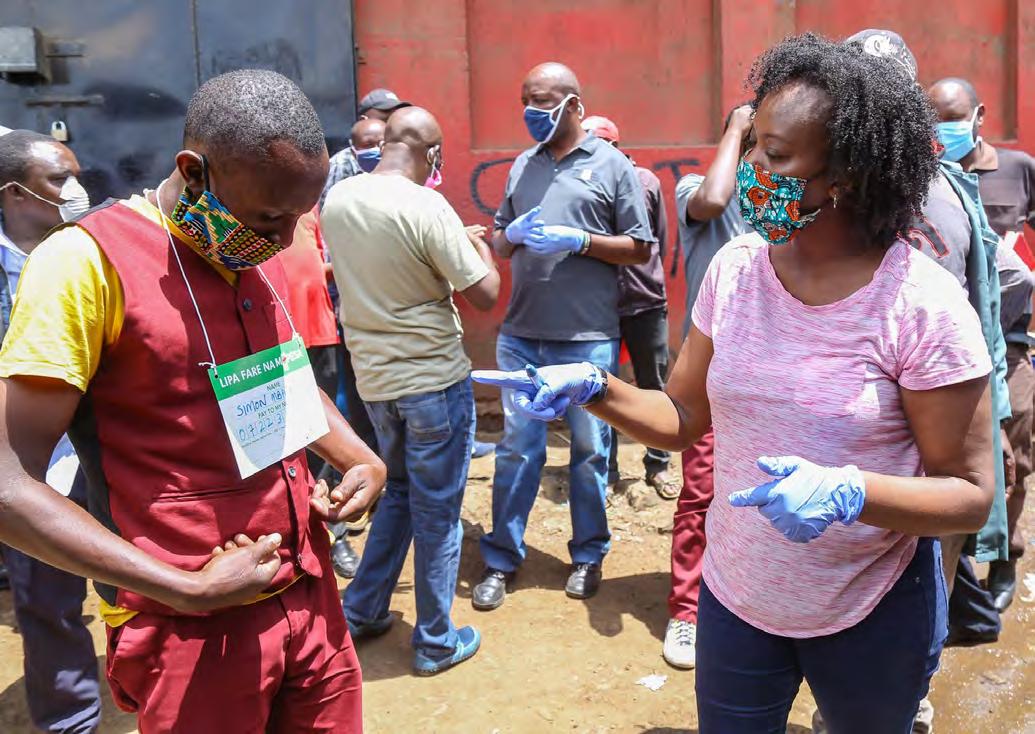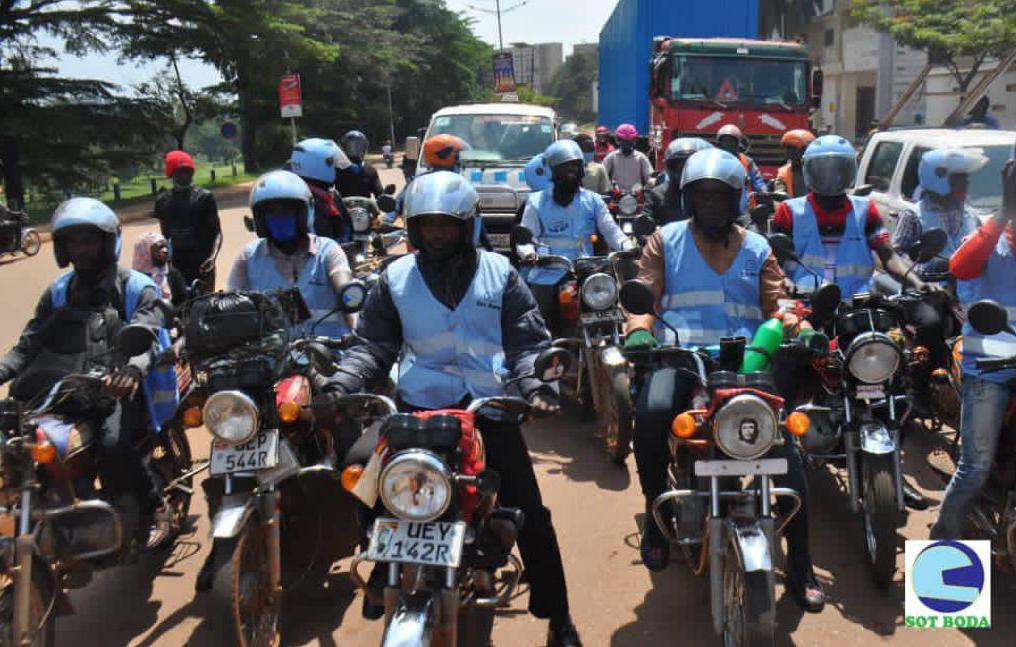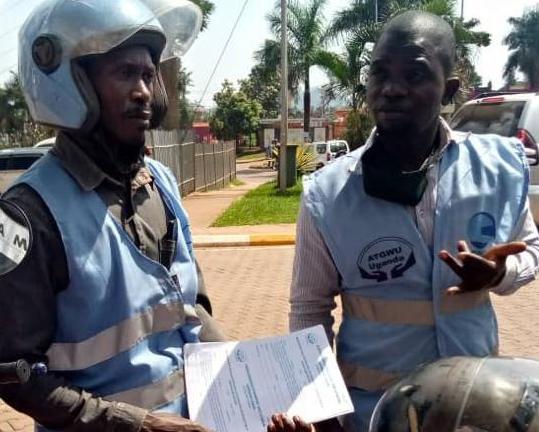
14 minute read
What reforms are being proposed?
Policies designed to reform public transport obviously differ from city to city, depending on local circumstances and political considerations, but there are some major common policies, encouraged by lending institutions.
NEW TRANSPORT INSTITUTIONS
In many cities, planning and regulation of passenger transport is divided between numerous authorities and agencies – such as district, city-wide and county governments, different national ministries (roads, transport, local government), mayors and presidential offices, licensing authorities and lawenforcement agencies.
There is clearly a need for reform and the coordination of urban passenger transport policy towards an integrated, efficient and sustainable public service.
In most cases, lenders like the World Bank demand the establishment of a single, citywide agency with responsibility for urban passenger transport before they agree to fund development programmes.
This can, however, create new problems, particularly the lack of democratic accountability and rivalries between the new agencies and elected bodies.
While trade unions may have recognition and negotiation agreements with the government, there is no guarantee that this is extended to the new agencies.
The new institutions also have an in-built bias towards neoliberal policy, expanding the role of the private sector.
The need to integrate policies… calls for the development of institutions that minimize jurisdictional and functional impediments to policy integration and allow for extension of the role of the private sector within an integrated strategy.’ FLEET RENEWAL
Urban passenger transport in most cities of the global South is dominated by large fleets of old, fuel-inefficient and polluting vehicles, mostly second-hand and imported from rich countries. Cities are under pressure to replace these with modern, more efficient vehicles. The World Bank claims that in Cairo, Egypt, for example, the programme to renew the city’s ageing taxi fleet translated into savings of 350,000 US tons (317,515 metric tonnes) of greenhouse gases between 2012 and 2018. But it is recognised that to have a major impact across many cities:
The global community must jointly support efforts to implement sensible emission standards, and restrict the sale of outdated, polluting and unsafe used vehicles from developed to developing countries’.
World Bank. Earth Day 2020: Could COVID-19 Be the Tipping Point for Transport Emissions? April 22, 2020
Governments are encouraged to replace public transport fleets with electric-powered vehicles (e-mobility).
“E-mobility is, at its core, a disruptive transition. That is a good thing. Transport’s share of global emissions continues to rise and “business as usual” will not achieve the results needed for meeting Paris Agreement targets.’
International Association of Public Transport (UITP)/World Bank. Electric Mobility & Development, December 2018
The UITP and the World Bank argue that the introduction of electric vehicles also presents new opportunities for the wider reform of public transport. It calls for governments to ensure that the strategic shift towards electric should have ‘public transport at its heart’, and ‘engage broadly, proactively, and continuously with different stakeholders’.
Few would argue against the need for cleaner and more efficient vehicles, but the capital investment required for such forms of fleet renewal is beyond the reach of most small
owners – particularly owner-drivers – in informal passenger transport. In fact, research has shown that they are barely able to afford the maintenance or renewal of old second-hand vehicles, let alone expensive new ones.
High levels of capital investment required in unsubsidised transport reform programmes favour powerful, well-resourced actors at the expense of small vehicle owners, whether these are individuals or worker cooperatives. In some cases, well-resourced actors may be transnational bus companies, while in others they may be powerful domestic players. Yet the outcome is the same: the exclusion of small owners and workers from meaningfully participating in the reformed transport system. For example, in a study of the implementation of BRT systems in three Latin American cities, academics found that the majority of incumbent vehicle operators were displaced by new BRT companies, rather than being incorporated into them11 .
It is clear that without substantial compensation schemes or availability of cheap loans to purchase new vehicles, a ban on secondhand imports or compulsory scrapping of old vehicles would force the collapse of the informal transport industry, and the loss of many thousands of jobs.
Due to this, where governments attempt to push through fleet modernisation programmes without adequate regard to the consequences for the workforce, they are inevitably met with resistance. For example, in the Philippines, transport unions have mobilised against government plans to replace traditional diesel jeepney minibuses with electric vehicles. While the unions agree that there is a need to upgrade the jeepney fleet, they argue that small jeepney operators are unable to buy new vehicles. They have called on the government to protect drivers’ livelihoods and provide low-interest loans to worker collectives and cooperatives so they are able to invest in vehicle upgrades. GOING CASHLESS
The Covid-19 pandemic has accelerated moves to introduce cashless payment in passenger transport. Apart from the need to reduce the potential spread of the disease through physical transactions with cash, cashless payment also has the potential to provide a platform for contact tracing among passengers.
It also has potentially significant benefits and risks for workers – particularly vehicle crews.
Cashless payment provides important benefits for personal security. Vehicle crews, taxi drivers and motorcycle taxi riders carrying large amounts of cash are extremely vulnerable to robbery and violent attack.
Some unions are already campaigning for the introduction of cashless systems.
Following pressure from the Transport Workers Union of Kenya (TAWU), the national transport authority agreed to introduce a mandatory cashless payment system. The union has built an alliance with cashless payments systems service providers to ‘ensure that workers’ demands, and concerns are reflected in the solution’. The cashless system is still in its inception stage but the union is hoping that it will help realise workers’ demands towards the formalisation of jobs in the matatu (privately owned minibuses) sector.
TAWU also recognises that a shift to a cashless system has to go hand-in-hand with digital literacy training for the matatu workforce, so that ‘workers can acquire the necessary skill and knowledge on how to handle cashless payments and the benefits thereof like financial inclusion and better wages’.
As part of a broad coalition with civil society organisations and the medical community, the National Confederation of Transport Unions (NCTU) in the Philippines demands that minimum health standards include the transition to a cashless payment scheme, which would ‘minimise risks to passengers and transport employees, and allow efficient payments for contracted services’. In the interim, they demand that fare collection is made before passengers enter the vehicle.
Cashless ticket payments in Nairobi
Cashless payment also opens new possibilities for the replacement of the target system with more formal employment contracts and regular wage payments. One of the reasons given by vehicle owners for the continuation of the target system is their inability to monitor or trust the honesty of crews to hand over the fares collected, justifying their practice to simply charge a target fee, and leave the responsibility (and the risk) to the workers. With secure cashless payments, it would be far harder for crews to cheat the system and more difficult for owners to avoid their responsibilities. It would also make it far easier to crack down on routine police bribery and extortion.
In addition, cashless payment opens the door to an urban transport system that fully integrates informal services with scheduled bus services, light rail, BRT and other modes, with coordinated ticketing and transfers enabling passengers to seamlessly switch from one mode to another. This is particularly important where informal vehicles provide feeder routes into a backbone of formal scheduled services. At the same time, by taking cash completely out of drivers’ hands and facilitating a direct revenue stream to vehicle owners, cashless payments may even further increase the amount of power owners have over drivers. Research into the potential for cashless payments in South Africa has highlighted that cashless payments would ‘fundamentally impact on the relationship between paratransit drivers and vehicle owners’ and diminish the ability of drivers ‘to determine their level of effort and income’.12
Workers in Nairobi also complain that cashless payment systems make it easier for passengers to cheat the system, with the workers having to make up the lost fare revenue.
Taking cash out of both drivers’ and passengers’ hands may also have a negative impact on those who rely on small payments from drivers and passengers. Bus crews, taxi drivers and motorcycle-taxi riders are at the centre of a complex economy, employing thousands more people in a wide range of occupations
– maintaining vehicles, providing services to passengers and crews, managing terminals and stages, and much more.
Most of these workers depend on an informal web of very small transactions: for example, tips from conductors and passengers, multiple small payments for goods and services and essential bribes to officials.
Given women’s overrepresentation in these jobs, they are likely to be hardest hit by a transition to cashless.
Even where cashless payments using mobile banking are already common, such as the M-Pesa system in East Africa, it is hard to imagine how the entire informal transport economy could run without cash.
This is why the introduction of new technologies into the transport industry must be done in consultation with transport workers and their unions. In Nairobi, for example, women informal transport workers from the Public Transport Operators Union are organising to negotiate the protection of women’s employment alongside the introduction of cashless payments. The ITF report The Impact of the Future of Work for Women in Public Transport provides recommendations for unions when confronting automation and digitisation in public transport more generally.
FORMALISATION OF OPERATIONS
The operations of most informal passenger transport services are based on arrangements and rules that have evolved organically over many years, often without effective regulation by the state (despite frequent attempts).
In East Africa, the organisation of operations is primarily provided by leaders in the terminals, bus stops, taxi or motorcycle taxi ranks (stages). These leaders may be democratically elected by the workers themselves, self-appointed, or imposed by criminal gangs.
Stages may be (democratically or otherwise) affiliated to district, city-wide or national associations or unions, which provide some coordination and (where possible) representation with the authorities. Rivalry between these associations can be fierce and sometimes violent. Stage leaders determine the routes, set the fares, enrol or reject drivers and riders, and keep order and discipline on the stage.
They collect fees and contributions to welfare funds, which can involve considerable amounts of money. In some cities, this money proved essential for the survival of workers during the Covid-19 lockdown.
City authorities have taken the opportunity to attempt reorganisation during the Covid-19 crisis,
In Kampala, Uganda, for example, the authorities announced that minibus taxis would only be allowed to restart operations after the lockdown when they abide by new registration rules and payment of fees and agree to be assigned to specific routes and stages by the transport authority.
The Amalgamated Transport & General Workers Union (ATGWU) and its affiliated association of taxi workers are not opposed to public transport reform in Kampala but were opposed to the lack of consultation with the workers and the union. They also objected to fees imposed before resuming operations from the lockdown, when the workers had no income. As the result of protest, the reforms were shelved, or at least delayed until consultations were underway.
Elsewhere, notably in West Africa, governments have effectively handed over control of operations to trade unions, who are given responsibility for the registration of drivers and vehicles, collection of fees and the policing of the industry. This can mean that union membership is effectively compulsory for drivers. It can also mean big business and a very large income for the union, which can lead to opportunities for corruption and major fights for control between factions.
In all cases, governments face a formidable challenge in attempting to reorganise and formalise the informal transport industry into regulated scheduled services.
As described above, the World Bank argues that governments should ‘consolidate, formalize and structure the informal sector … to professionalize transport operations’13 .
Boda boda drivers in Kampala
This can be interpreted in different ways. The standard World Bank response is to advise the authorities to consolidate into the private sector by handing over the entire urban transport system to large, formal (preferably transnational) transport companies and by clearing informal operations off the streets. This is clearly impossible without generating mass unemployment of transport workers and causing major conflict.
But there are alternative solutions, including state ownership, cooperatives or other forms of social enterprise – such as trade union-based organisations.
REGULATION OF MOTORCYCLE TAXIS
Over the last decade or so, there has been a huge expansion of unscheduled passenger transport – particularly motorcycle taxis. In some cities, there are now hundreds of thousands of people who make their living by operating a moto taxi or boda boda.
The industry is almost entirely unregulated, other than through self-organisation in the larger motorcycle taxi ranks by the riders themselves. It also has a very bad image in the media. among politicians and in the general public (despite millions of commuters finding it the most convenient way to avoid traffic gridlock) and is blamed for accidents, criminality and increased congestion. In many cities the use of motorcycles to carry paying passengers is technically illegal but the law is universally ignored or unenforceable.

This presents a major problem for transport planners and regulators, who are trained and equipped to manage scheduled services, with clearly defined routes and stops, and have few policy guidelines in the regulation of a point-topoint mass transport service.
Some governments have sought to legalise and regulate the industry through on-demand transport platform companies such as Uber, Taxify and SafeBoda. These companies have recognised the huge market for motorcycle taxi services and have proliferated throughout big cities, particularly in the global South.
According to press reports, in May 2020 boda boda riders in Kampala were to be required to register under ride-hailing companies after the lockdown, forcing the industry to go digital. The Kampala City Council Authority (KCCA) was
reported to demand that riders ‘formalize their membership with registered digital companies like SafeBoda, Uber and Bolt, among others, in the next 21 days14’.
The KCCA plan assumes that, by forcing the drivers to adopt ride-hailing technology, it will enable the government to keep track of them, and that it is easier to work with corporations than with the workers themselves. Registration and training of riders can be outsourced to the private sector at no cost.
From the riders’ perspective, joining an ondemand platform can be more attractive than being an independent informal operator. For those who worry about job security or being ‘chased away’ in the face of potentially new government regulation, they feel somewhat more secure within a company recognised by the authorities. It can also free riders from the stage structures and the obligations and politics that accompany them, and riders have claimed that it provides greater protection from police harassment. According to riders interviewed in Kampala, they can also potentially earn more than their independent counterparts15 .
Nevertheless, there is often tough competition and aggressive pricing policies between ondemand platforms, leading to cuts in fares and riders’ income, and riders are at the mercy of the app’s opaque algorithms. Companies such as Uber also have an extremely poor record of looking after their drivers (who they class as independent contractors rather than employees). And in many cities drivers have seen rates cut once dominant market positions are reached.
Recent research into the working conditions of Uber drivers conducted in the cities of Dar es Salaam (Tanzania), Johannesburg (South Africa) and Nairobi has also demonstrated that many problems found in the informal economy are reproduced in platform economy work. These include the majority of drivers not owning their own vehicles and therefore having to pay weekly targets to vehicle owners, generally low and precarious incomes, long working hours and police harassment. While it is difficult to estimate the numbers of women working as drivers for platform companies, the numbers are increasing16 . During Covid-19, women drivers in Nairobi have reported that platform companies favour men to drive and that women’s pay has reduced because of being unable to work at night due to the curfew.
Poor working conditions and the reproduction of gendered inequalities in platform economy work shows that the use of digital technologies offers no shortcut to decent work. As with all technological change, workers and their trade unions will have to fight to make sure that new technology in the transport industry is used to bring about positive changes for workers, rather than simply introducing new mechanisms of exploitation.
The ITF recognises that on-demand transport has a role to play as part of integrated public transport services but it demands that national and local governments regulate on-demand transport platforms to ensure that they are considered transport operators that employ drivers and pay taxes. Workers for on-demand companies must have the right to minimum hours, minimum pay rates, insurance and sick pay, and to appeal algorithmic decisions.







